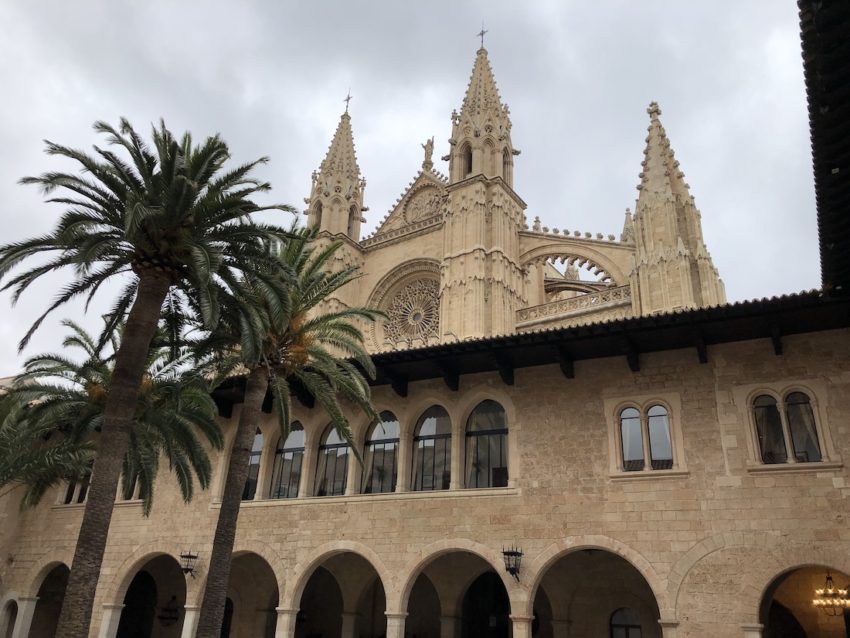In London the sun was shining, temperatures were hitting new records for an Easter weekend and the newspapers were crowing about it. In Palma, it was cool, drab, drizzly and windy. This was not how it was supposed to be, and my mood was just as gloomy.
Perhaps that’s why it took me several days to be won over to the charms of Mallorca’s capital city. This was strange because several people I trusted had recommended it to me, had celebrated its glorious city centre, its food, the bars and, of course, the weather. There were other reasons why I felt low: I’d hated the easyJet flight from Gatwick the night before, which was cramped and saw me stuck next to two gobby, Millennials; the city was overflowing with far too many people, many of whom had been bussed in from the ugly, giant cruise ships moored in the port; several of the attractions we wanted to visit were closed for the holidays; and the weather forecast was relentlessly depressing. However, as I kept telling myself, we’d spent generously on our break and I needed to get my act together…
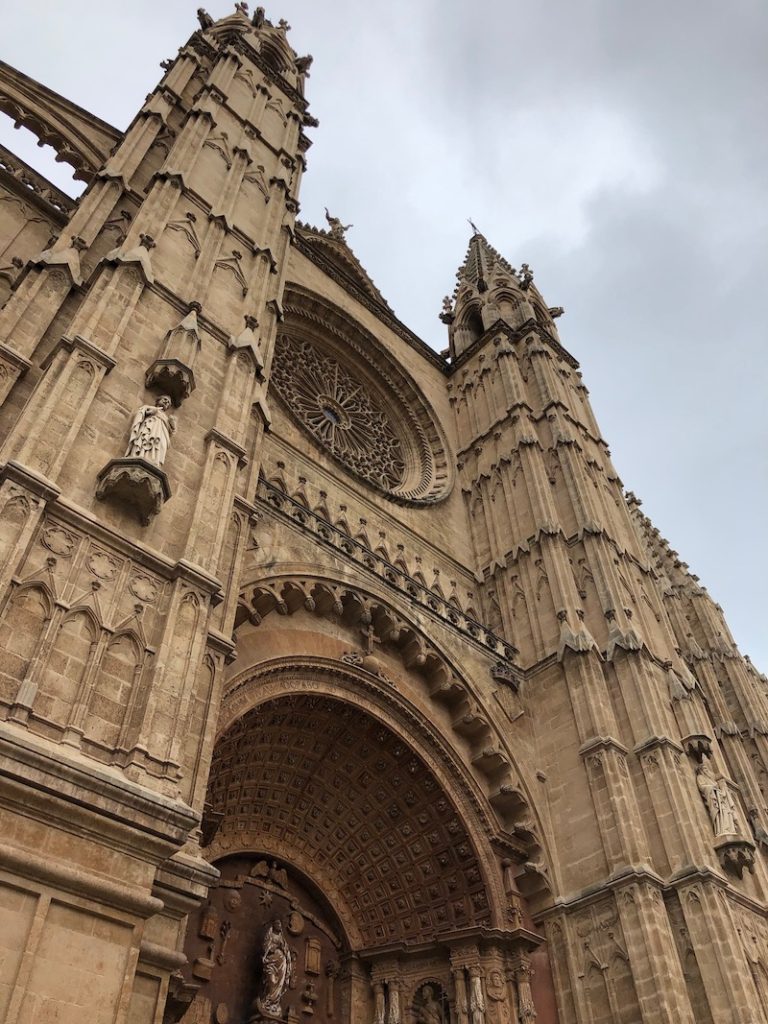
We were staying at the Hotel HM Jaime III on the edge of the old town, close to the popular Santa Catalina district. It’s in one of the attractive apartment blocks that line the city’s inner ring road, and the designers had gone for an oppressive black scheme in the communal areas that was a bit grim. Our bedroom was pleasant enough but the maids using the service room next door yelled and slammed doors, ensuring that we didn’t get much of a lie in.
A short walk from the hotel and we were in the historic city centre with its jumble of alleys, towering town houses, quaint squares, imposing churches and warm sandstone. Like other Spanish cities, Palma’s layout offers shade on steamy summer days and channels cooling breezes. Like Valletta in Malta, it’s a city of balconies. Like Bologna in Italy, many streets are lined with colonnades. We got a hint of the old city on our first night, when we grabbed a few late beers in a bar on Carrer de Sant Feliu, a charming cobbled lane that’s a bit upmarket these days thanks to its boutiques, galleries and mansions.
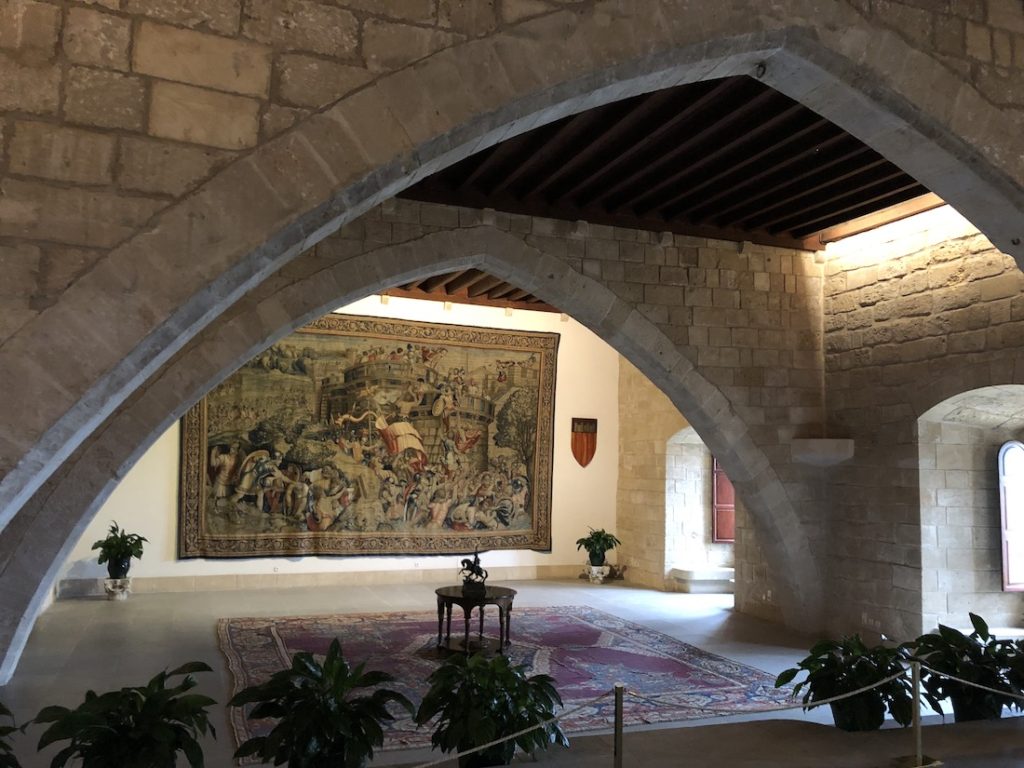
On Good Friday we wandered to the heart of the city and the bulky building that dominates the landscape, the cathedral (pictured top). It’s as famous for its interior Gaudi renovations as it is for its immense exterior Gothicness but we weren’t allowed in unless we were prepared to sit through a mass, and nothing on earth could persuade us do that. The Easter closing hours meant we wouldn’t get a chance to see the cathedral over the rest of the weekend so we had to cross it off the list of things to do. Swarms of people filled the streets outside but far fewer were queuing for the Royal Palace of Almudaina opposite so we bought a ticket and took a tour, but only after being told off for daring to cross a bit of sticky tape on the floor before it was our turn to purchase from the kiosk. I mean, it’s surprising we weren’t deported for committing such an offence.
The palace, like the cathedral, stands on a small hill that’s been occupied for several thousand years. The palace has Roman origins, went on to become a fortress for Moorish leaders and then a royal palace when the Christians reconquered the island. The building has been much altered over time, with the result that windows disappear into ceilings and otherwise grand spaces look oddly truncated. Some rooms are quite stark but others are richly and opulently furnished, used by the current royal family when they’re in town. The palace is cool, calm, airy and brightened by some attractive courtyards.
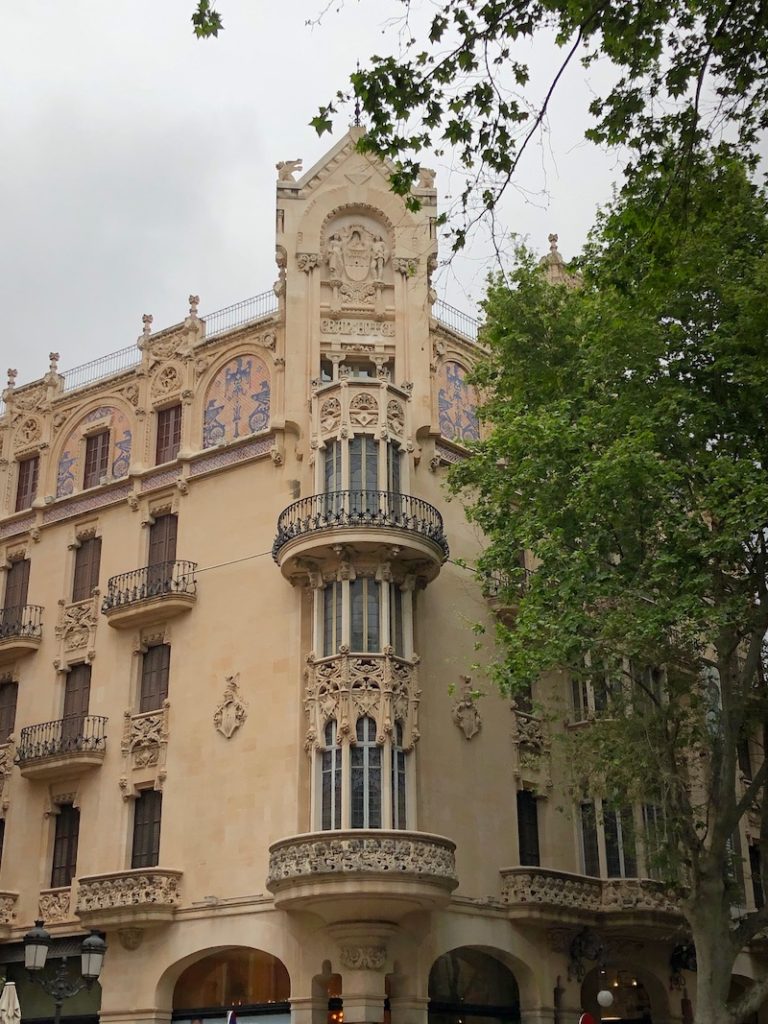
The chaos was outside, where the hoards thronged, tacky souvenir stalls cluttered the pavements and suspect types in large numbers hawked fake designer gear. There were just too many people and it was really quite depressing. So we went for a walk among the narrow lanes of the ancient city, admiring its wonderful architecture and the heavily shaded courtyards the locals call patios, with their elegant staircases, wells and pot plants. Palma has a wealth of great buildings, many in the art nouveau style that also goes by the name of Catalan Modernism in Spain. The Gran Hotel building is a particularly elegant example and is often cited as the one that launched the art nouveau wave in Palma. The Town Hall is radically different, dating from the 18th century, and its stately frontage reflects the confidence and wealth of the then city fathers. We also loved the ironwork detailing on the doors to otherwise everyday apartment blocks, which were rich in design and style.
The old city centre never failed to turn up a treat, whether it be plane tree-lined avenues such as the sophisticated but crowded Passeig del Born, impressive street art, an ancient Moorish well or modest houses with frontages crowded by lush pot plants. There’s so much more beyond the souvenir shops and cheapo tapas joints.
After our Saturday trip to Sóller, we spent most of Sunday at the San Juan Gastronomic Market. But Sunday was also the day we discovered a magnificent building called La Lonja, once the home of the guild of Mallorca’s merchants. Dating from the 15th century and the work of Guillem Sagrera, it’s an architectural masterpiece composed of one large rectangular space. The elegant ribbed roof is supported by just six columns that look like giant corkscrews. We walked around admiring La Lonja’s strength, grace and beauty and didn’t want to leave.
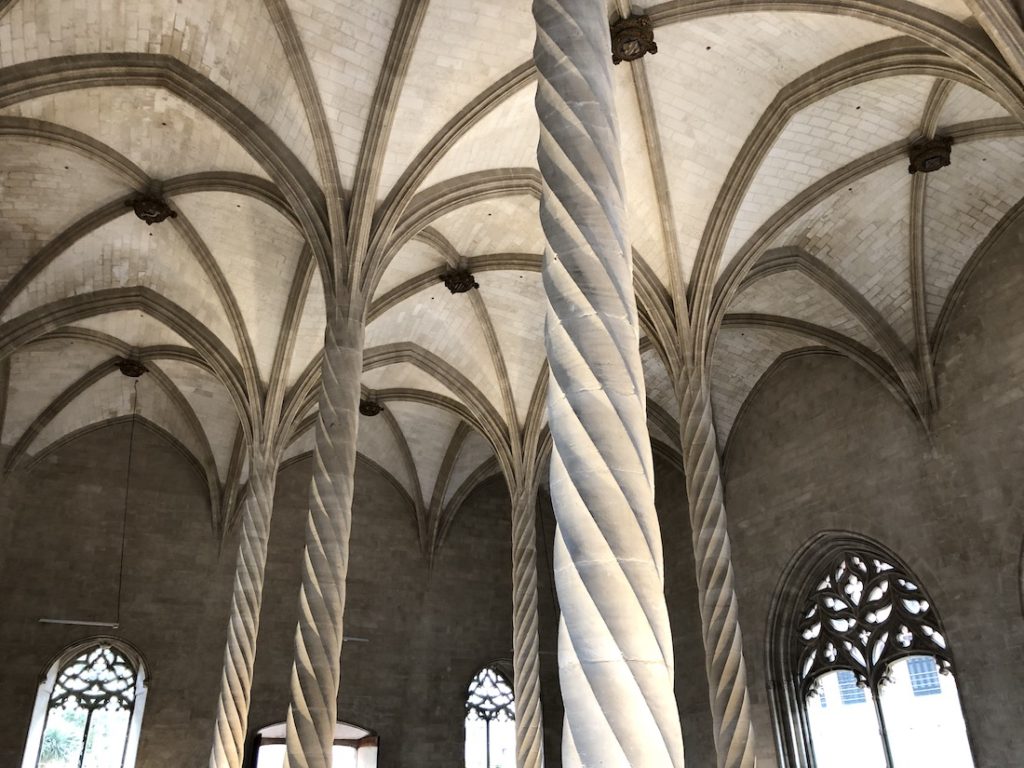
Walking east from La Lonja, Palma’s historic grand core gives way to the workers’ district of Santa Catalina and then to the modern seafront and harbour with its yachts, towering hotels and apartment blocks. It’s not much fun for pedestrians because there’s little to see and the dual carriageway that follows the waterfront is a noisy, polluting menace. We were walking to the Castell de Bellver, high on a hill that overlooks the city, and turned off the main road as soon as we could. Behind the big hotels we found a mixture of shoddy residences and run-down shopping streets but also more attractive roads, such as Carrer de Robert Graves, which has plenty of character, some grand villas and colourful cottages.
Our route to the castle took us up endless flights of exhausting steps through the woods to a quaint chapel, which gave us excellent views of Palma and its bay below. The views were even better at the top but, as we knew it would be, the castle itself was closed being a Monday so we had to make do with the grounds. Work began on it in the early 14th century and its architect was Pere Salva, the same man who designed the Almudaina Palace. It’s circular in form, which makes it a rarity, and has a number of towers. Elsewhere there are some excellent views of the hills and valleys to the north-east of the city.
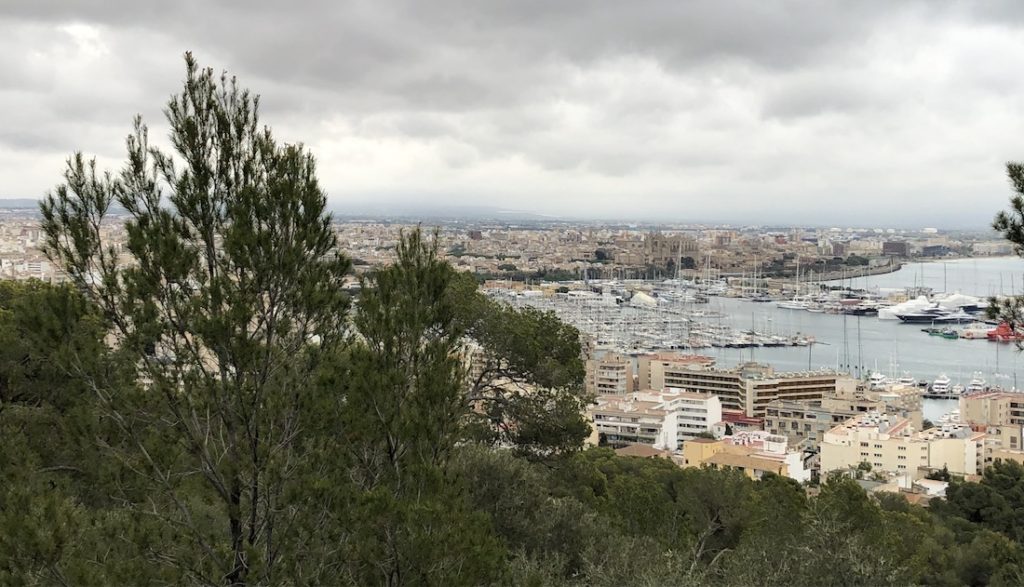
We walked back to the city centre, taking a different route through the back streets and stopped at a cafe near La Lonja for a few beers while our weekend in the city drew to a close. We collected our bags from the hotel and caught a cab to the airport, ready for our evening easyJet flight back to Gatwick.
Palma hadn’t been quite what I was hoping for but I had warmed to it over the course of our long weekend. It certainly has elegance, good restaurants and bars, and pleasant walks. It’s just a shame it’s so popular. Still, there’s much more to Mallorca that I’d love to explore one day…

